- All Posts
- /
- Reducing customer churn with data-driven messaging
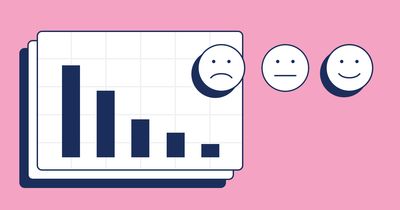
Reducing customer churn with data-driven messaging
Messaging and Automation-
 Chris Hexton
Chris Hexton
-
Updated:Posted:
On this page
Customer churn refers to the customers that stop using your product or service. For SaaS businesses, customer churn is a result of customers canceling or not renewing their subscription.
Measuring customer churn allows you to understand how effective your business is at retaining customers, and a low customer churn rate is vital for business growth.
In this article, we take a look at measuring your customer churn rate, why customers churn, and how you can use behavior-based, personalized email and push notifications to drive engagement and reduce customer churn.
Measuring customer churn
Customer churn rate can be calculated in several different ways, and each metric is useful for different purposes and types of businesses. The most straightforward measure of customer churn rate is the percentage of customers that stopped paying for your product during a specific period.
SaaS and subscription businesses that price monthly track churn rate by monthly cohort, as well as annually, so they can see how this rate changes over time.
Why is it important to calculate customer churn rate?
Customer churn rate is one of the most important metrics for understanding the health and long-term prospects of a business.
The more customers that churn, the more you need to acquire to maintain your revenue or grow at the same rate. Since the cost of attracting new customers can be significantly higher than the cost of retaining customers, high churn rates can quickly inhibit revenue growth.
Measuring and tracking customer churn rate is therefore vital for financial modeling, prioritizing product development, and customer success efforts. It enables businesses to understand whether customer retention has improved on a month-to-month or annual basis, and what may have affected it.
What is an acceptable customer churn rate?
Churn rates always vary by industry. The maximum viable churn for a company depends on the company’s runway and the rate at which it can grow existing accounts through up-sell and cross-sell.
Tech industry investor, Andrew Chen advises that in general “it’s critical to get monthly churn under 5% and the goal should be 1-2%”.
Understanding why your customers churn
It can be useful to measure and analyze churn for different customer tenures, as the reasons long-term customers churn are often different compared with newer customers.
Short-term customer churn
SaaS businesses typically observe a higher customer churn rate in the initial few months of the customer lifecycle due to customers still learning and evaluating the product, but not reaching the ‘aha moment‘.
Long-term customer churn
Reasons for long-term churn may include customers experiencing bugs or issues with the product, lack of visible product development, and poor customer service.
Measuring both short-term and long-term churn rates helps you to more easily identify and address the causes, and measure the impact of your solutions.
Reducing short-term customer churn with data-driven messaging
Short-term churn is typically due to users not reaching the ‘aha moment’ – the point at which they realize the value in your product. While it is called a ‘moment’, it is typically a set of actions that separate users who you are likely to stick around from those who will churn.
Every product has a unique ‘aha moment’.
For Facebook, the aha moment is when a new user connects with 7 friends in 10 days. For Slack, it’s when 2,000 messages are sent between a team.
Facebook and Slack have simplified their ‘aha moment’, but for many products, the ‘aha moment’ is reached when a new customer completes several actions.
Investor and former Growth Product Manager at Snap Inc., Parsa Saljoughian provides a helpful guide on how to discover your app’s aha moment.
Once you’ve identified your product’s ‘aha moment’ you can map out ways to help customers reach it. Email and push notifications are two of the most effective channels for driving product engagement and helping customers reach the ‘aha moment’.
Behavioral onboarding emails
Understanding and tracking customer interaction with your product is key to ensuring you can deliver relevant onboarding email and push messages that prompt action. For example, a customer who logged in but didn’t interact with your product will require different messaging to a customer who successfully engaged with two key features and invited a friend/colleague to use it too.
Dropbox’s email provides a great example of how you can prompt users towards an action – and get them closer to their ‘aha moment’. It focuses on a clear benefit and makes it quick and simple to achieve.

Invision send a similar email:
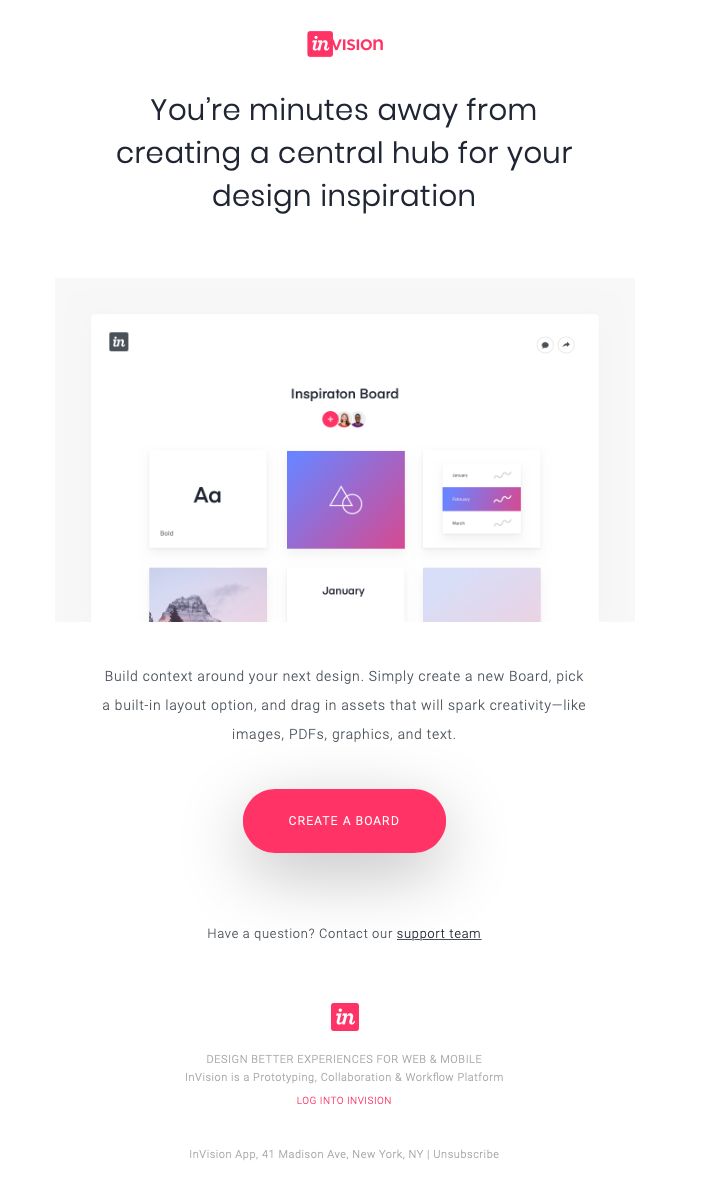
Emails like this can be set up in a messaging workflow and triggered based on the customer’s behavior. For example:
- Trigger workflow when the customer creates an account
- Wait one day
- Send email 1 if the customer has not ‘created a board’
- Send email 2 if the customer has ‘created a board’
Once customers have started engaging with your product, you can use email and push messages to remind customers to finish incomplete tasks that will bring them closer to the ‘aha moment’.
“The best apps will be the ones you don’t have to remember to use. They’ll remind you. Soon that will be the only type of app.” – Noah Weiss, Slack (First Round interview)
If you see that a new customer is heavily engaged with your product in their first days or weeks and has reached the ‘aha moment’, you can create a condition in your workflow to stop sending them onboarding emails entirely. Instead, you could send an email or message offering a discount on an annual plan (for example).
Reducing long-term customer churn
Long-term churn is typically due to customers no longer experiencing enough value from a product (with the exception of unavoidable churn, i.e. a customer that ceases their business). Product updates and personalized insights are two types of emails that can help customers experience value and encourage continuous product engagement.
Product update emails
New features and updates can significantly increase the value that customers receive from your product so it’s important to communicate them effectively.
Starling Bank, Asana, and Notion provide great examples of product update emails that explain the benefits of the new features, educate customers on how to use them and prompt engagement with the product.
Starling bank email example:
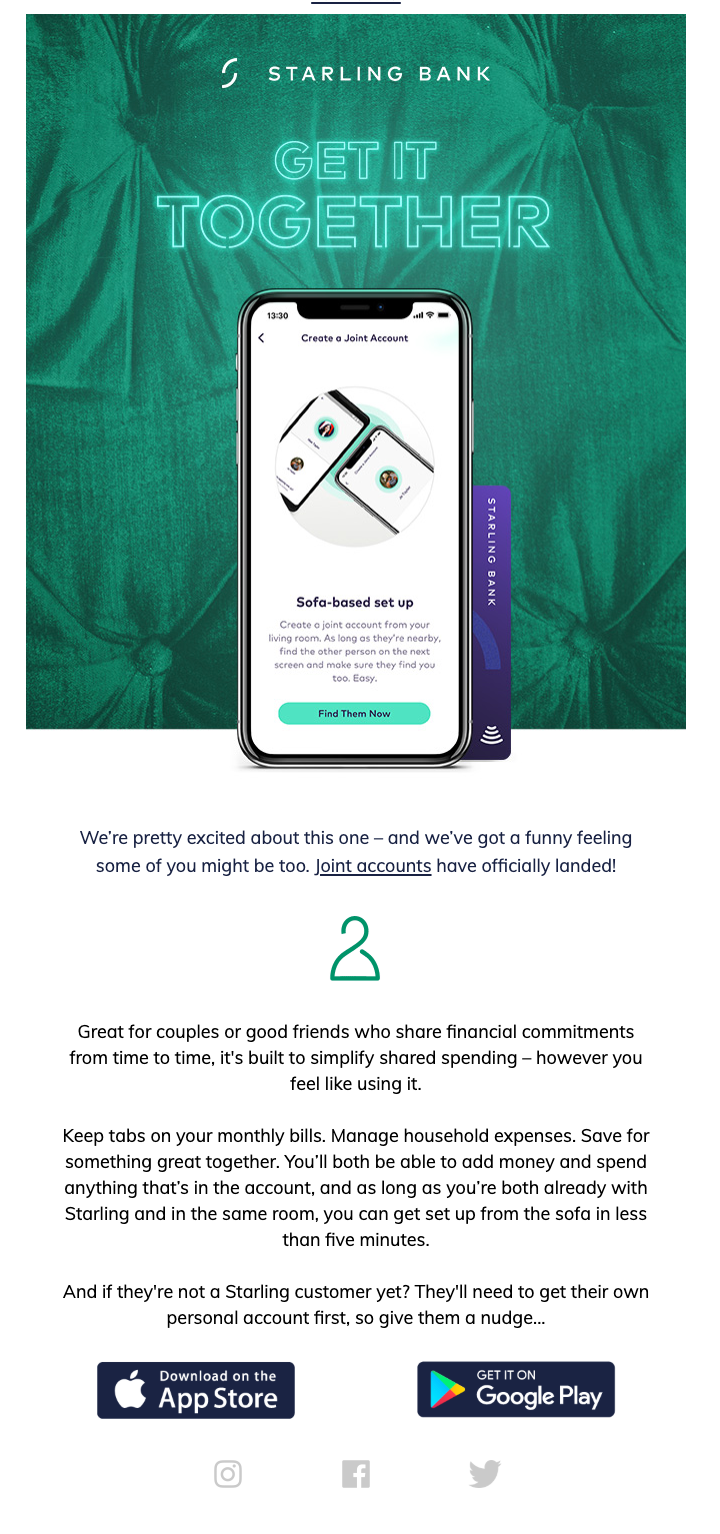
Asana email example:
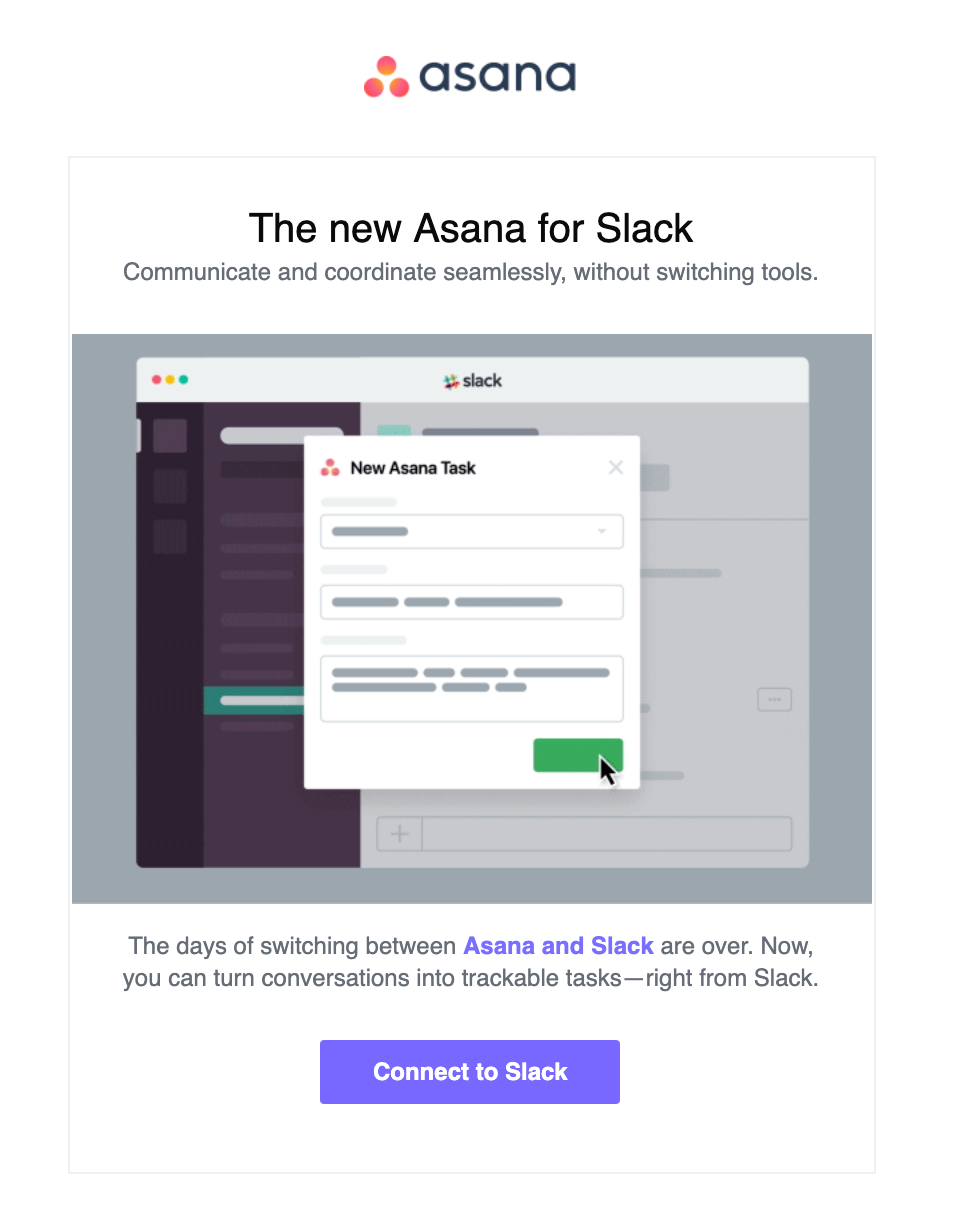
Notion email example:
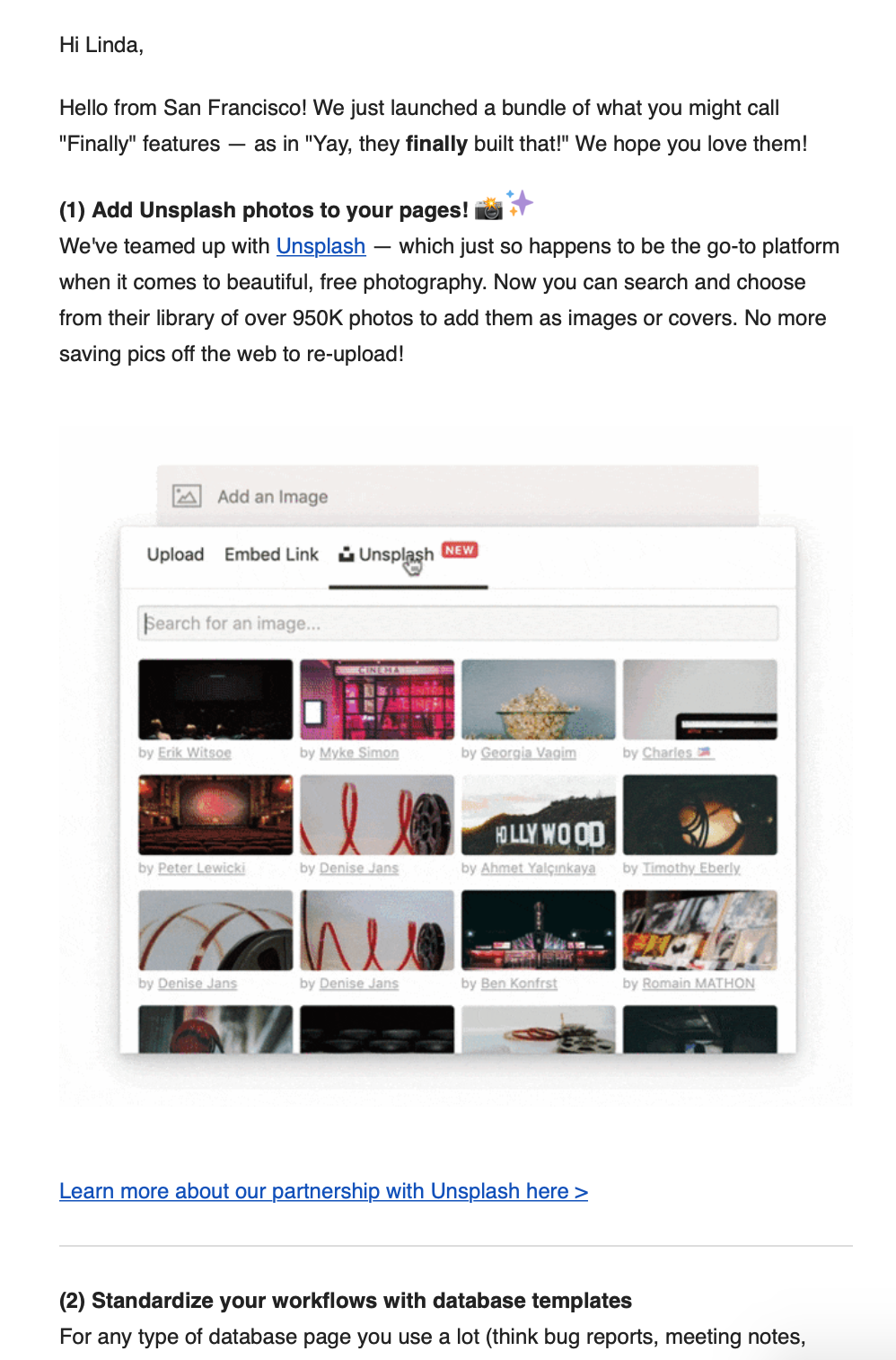
Regular product update emails show momentum in product development so customers trust the product will continue to meet their needs in the future.
Collecting customer information and tracking event data will enable you to segment your customers and ensure you only send product update emails to those for whom it is relevant.
Data-driven personalized insight emails
Customer account usage insights can deliver additional value and encourage continuous product engagement.
Small business accounting app FreeAgent sends a weekly summary email to prompt customers to take specific actions, based on their account usage. This email acts as an extension of their core product by helping their customers stay on top of their finances. It prompts actions and habits as a way to continuously deliver customer value.
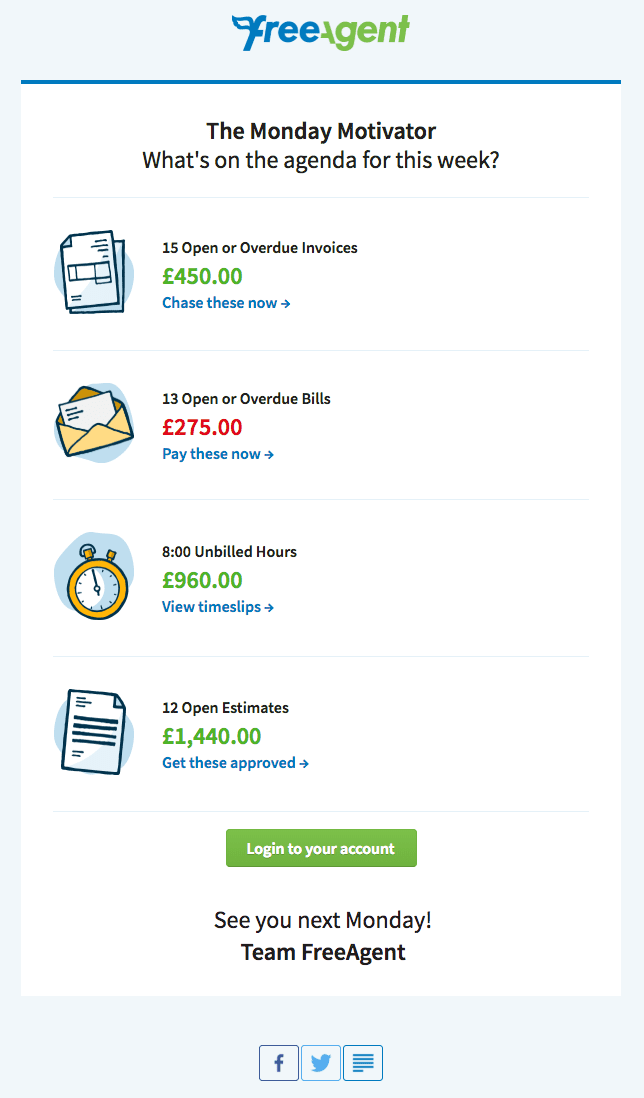
Strava sends a similar email – their monthly stats update delivers customers personalized insights based on their account usage and prompts engagement with the product.
 Image source:
Dribble – Monthly Stats email by Strava
Image source:
Dribble – Monthly Stats email by Strava
You can create personalized insight messages, like FreeAgent and Strava, by adding dynamic content to your emails. Vero supports the Liquid templating language to allow you to create personalized content, and it’s Fusion feature enables you to pull data directly from your API into Vero at the time the email is being rendered, just before it sends. This helps you create emails with account usage data, personalized product recommendations, and more.
Measuring the impact of your messages on customer churn
Measuring the direct impact of campaigns on customer churn rate is notoriously difficult due to the required time period for testing, and ensuring that no other factors influence customer retention during that period. You can, however, more easily and accurately A/B test email and push campaigns to see the impact on customers’ feature usage and engagement.
We’ll be adding more on how to accurately test the impact of email and push campaigns on key growth metrics – stay tuned!
For now, we hope this article inspires you to create messaging that helps reduce customer churn, and deliver personalized emails that offer more value and prompt regular product engagement.

